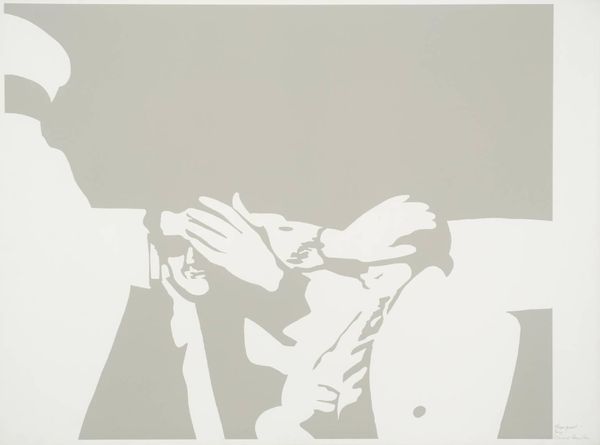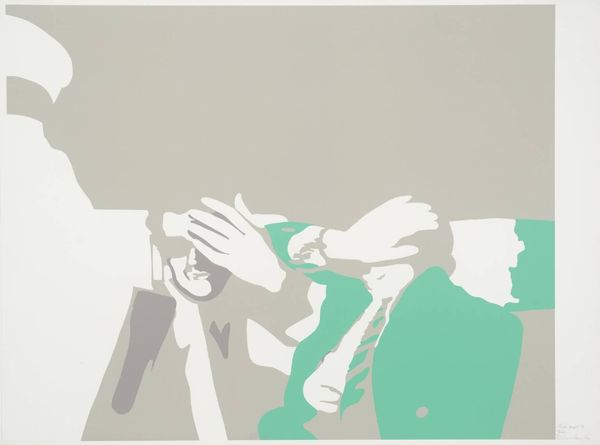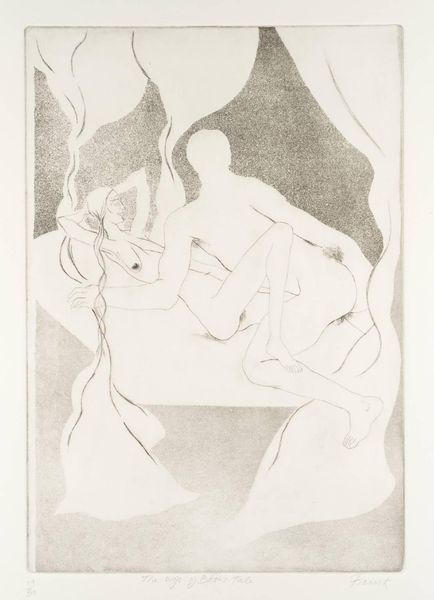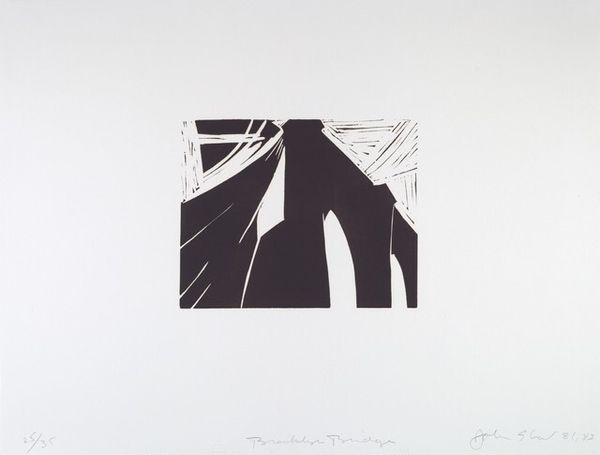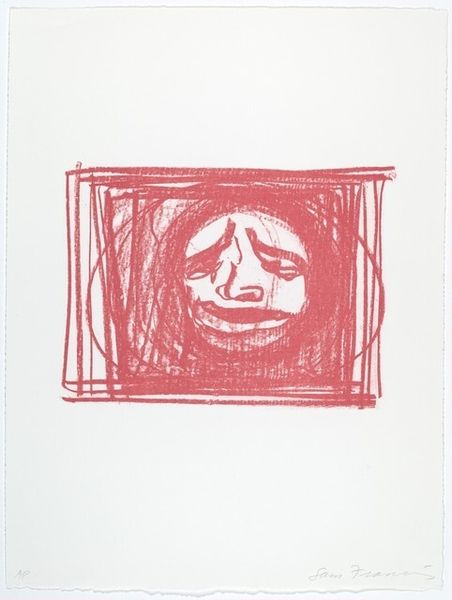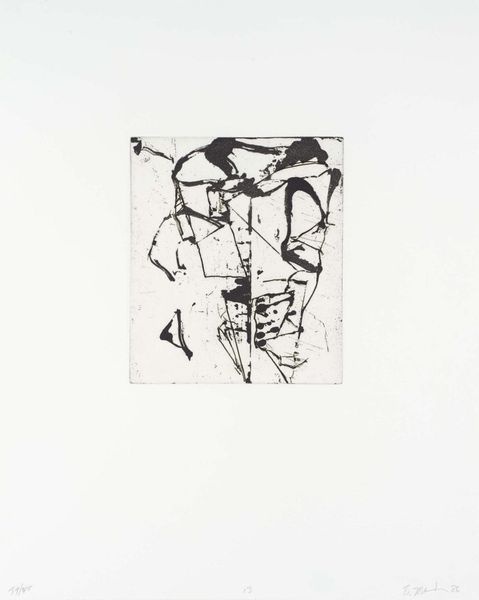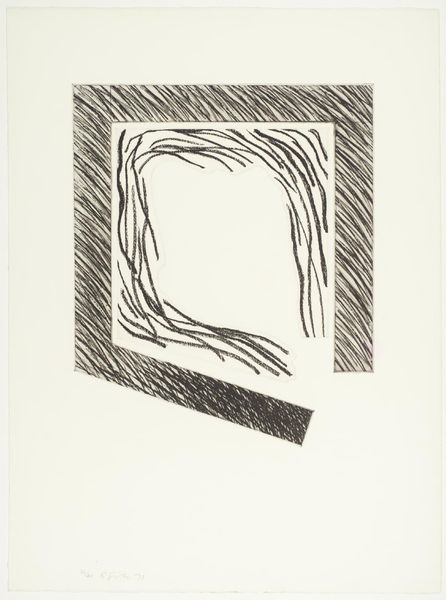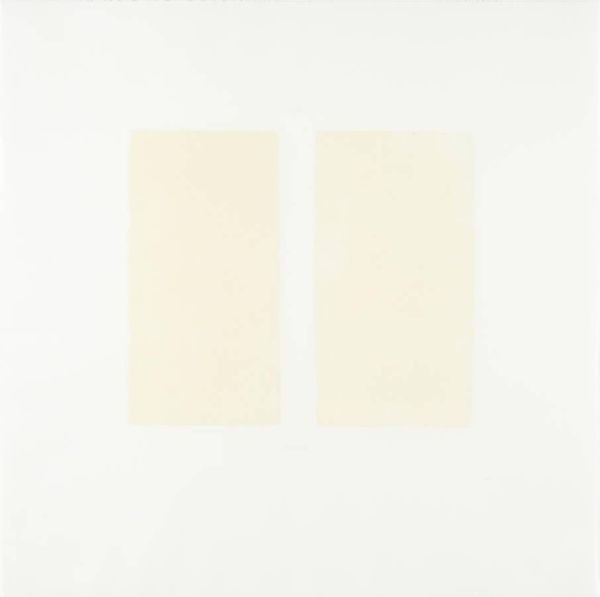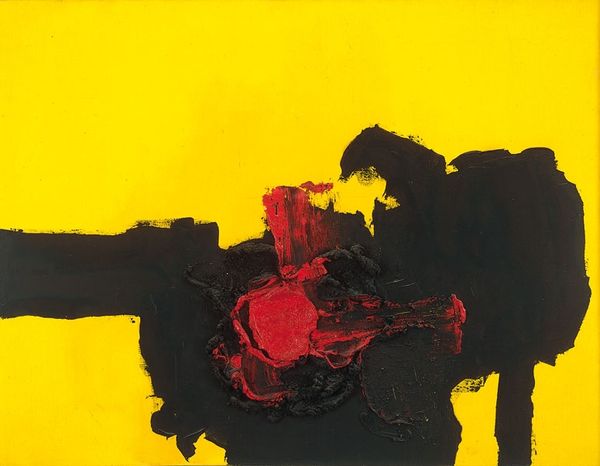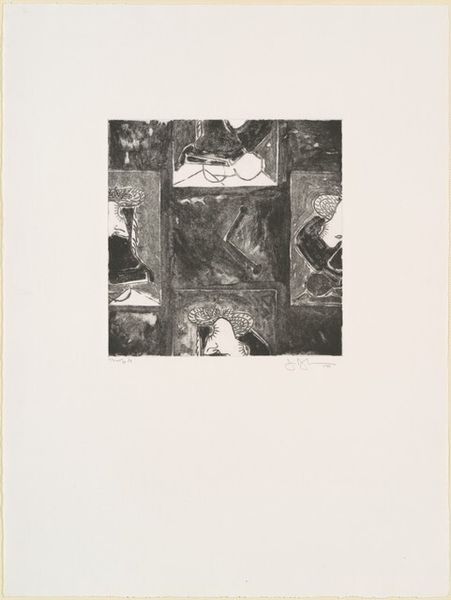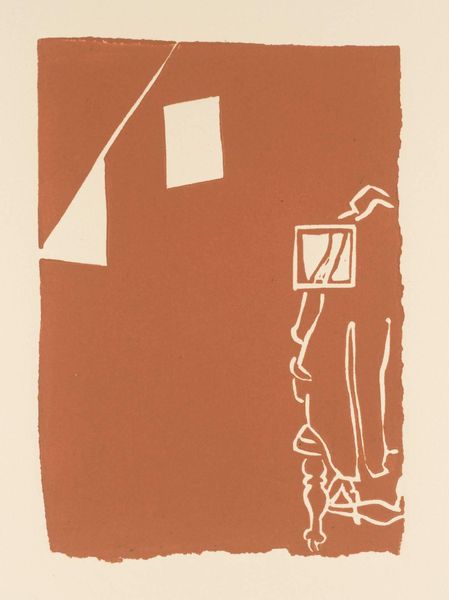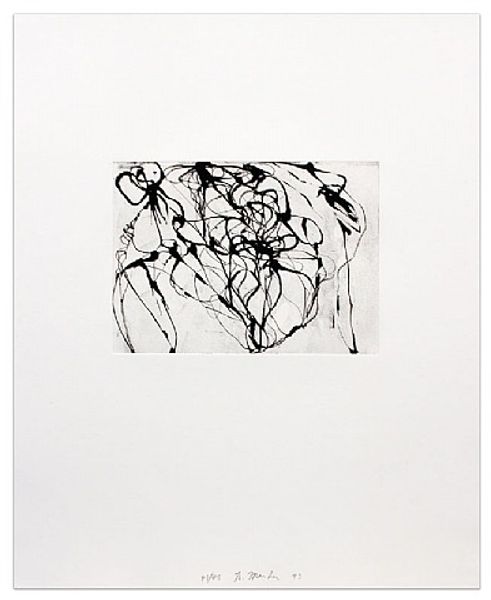
Dimensions: image: 680 x 859 mm
Copyright: © The estate of Richard Hamilton | CC-BY-NC-ND 4.0 DEED, Photo: Tate
Curator: Richard Hamilton's "Stage Proof 2" uses a monochromatic palette to depict what appears to be a tense encounter. What's your initial take? Editor: The stark contrast and flattened planes give it a strikingly impersonal feel, almost clinical despite the implied human drama. The composition feels intentionally unsettling. Curator: This piece, though undated, reflects Hamilton's broader interest in the media's portrayal of conflict and public figures, particularly during times of political unrest. One could see it as speaking to the staged nature of these events. Editor: Yes, the reduction of forms to near-abstract shapes, combined with the limited tonal range, forces us to consider the underlying structure of the image, almost like deconstructing a propaganda poster. Curator: Exactly. Hamilton asks us to question what we are seeing and the role of imagery in shaping our perceptions. Editor: In the end, it's this tension between representation and abstraction that makes "Stage Proof 2" so compelling. Curator: A powerful reminder of how easily narratives can be manipulated through visual language.
Comments
Join the conversation
Join millions of artists and users on Artera today and experience the ultimate creative platform.
tate 6 months ago
⋮
Release – Stage Proofs 1-13 and 16-19 (P02416-32; the series is incomplete) is a group of seventeen prints showing the process of building up colour to make the print Release (P04254). Each proof represents the successive addition of a screen, made from a hand-cut stencil, used to apply a particular colour. The completed print Release combines the seventeen colour screens, each used once, and the photographic black screen which has the texture of an imprint on canvas as well as the photographic halftone, used twice.
